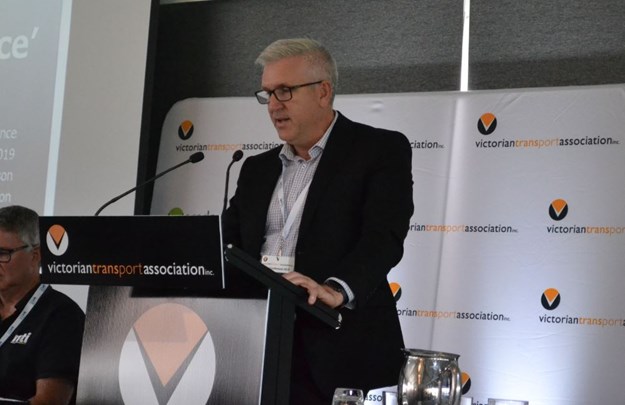Training, licencing and operator engagement in spotlight
Depending on who you speak to, one of the key issues industry currently faces is a driver shortage. Operators often say they struggle to recruit and retain good drivers.
National Transport Insurance (NTI) risk manager Geoff Rosser and Armstrong’s Driver Education CEO Craig Nicholson explored the issue at the 2019 Victorian Transport Association (VTA) conference.
Nicholson questions the true nature of industry’s driver ‘shortage’.
“There’s 18,000 people per year that get a truck licence in Victoria alone, so some would say it’s a myth that there’s a shortage.
“Probably . . . there is a shortage of is the people who actually can drive at low risk.
“That is the biggest issue I think the industry’s facing, is that what is that capacity level?
“Where is the real shortfall?”
Rosser adds: “There’s a lack of clarity on what skills and experience represent adequate, and what represents best practice.
“If your sole process for determining whether a driver is suitable for a task is whether they hold a current licence, then I don’t believe you are a best-practice operator.”
Companies need drivers, and drivers and governments want programs that deliver employment outcomes, which leads to a culture of “cutting corners” from providers, Nicholson states.
“They can enrol the person. They can do the theory, knowledge and assessment. They can do the pre-drive knowledge assessment, load restraint knowledge and assessment, cabin drill knowledge and assessment, reversing, drive training, drive assessment and finish that anywhere in a half day to a day.
“Is it possible? Well, obviously you’re the judge. I don’t think it is.”
Driver shortage concerns extend beyond Australia. Read more here
Beyond the driver and the pre-employment process, companies also fail in making their working environment conducive to skilled and engaged drivers.
“What we’ve seen is a lot of transport companies have a disengaged workforce – staff do the job that they’re employed to do, but they don’t feel valued, and as a result they often don’t take pride in what they’re doing,” Rosser says.
Rosser speaks about NTI’s employer/employee review program called Traction, while Nicholson puts forward a case for Canada’s 103-hour Mandatory Entry Level Training (MELT) model, as possible solutions.
Full story in the May edition of ATN magazine.



